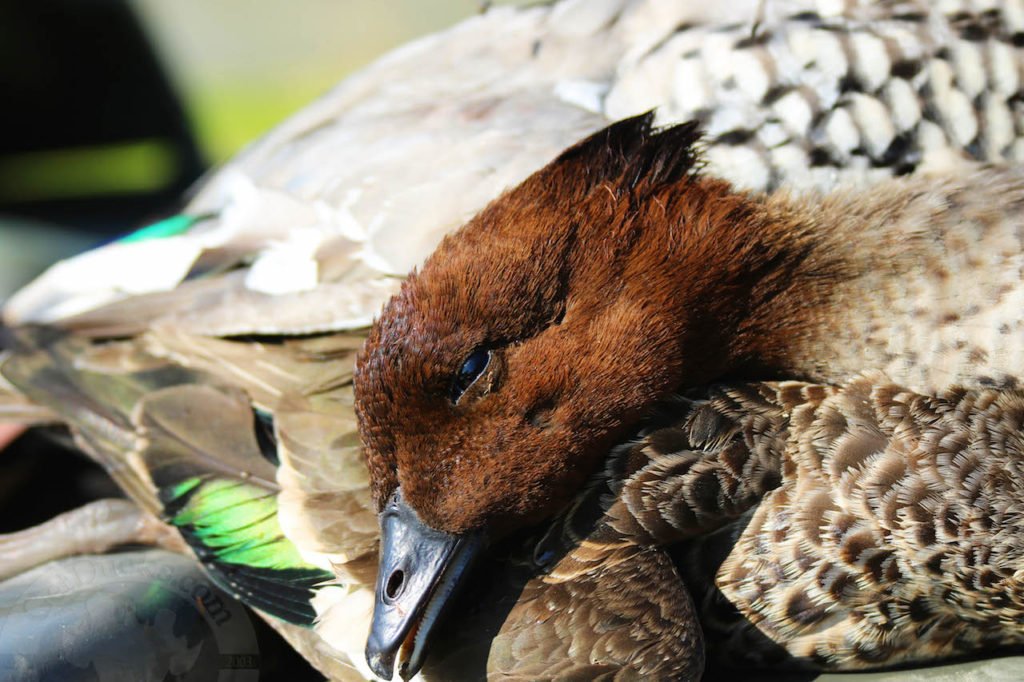Maned Duck
Maned Duck (Chenonetta jubata), also commonly known as the Australian Wood Duck or Maned Goose, is a dabbling duck with an incredibly unique body shape. Their head is quite small compared to their body, and the back of their head can look like it protrudes. Matching their small head, Maned Duck bills are short and blunt. The neck is short yet slender and leads to its bulbous body and short legs. Around their large eyes is chestnut plumage that extends halfway down their neck. It abruptly changes to cream and brown scalloping on the breast and the sides are highly vermiculated with black and white, and looks solid gray from a distance.
Maned Duck females overall have similar plumage. They have lighter brown plumage on the head and two eye streaks, one above and below the eyes. The plumage gradually changes to brown and white scalloping, which continues to the flanks.

Available Hunts
Maned Ducks have an expansive range across Australia and Tasmania in a wide variety of habitats. They are known to take advantage of deeper waters that other dabbling ducks tend to avoid. As their colloquial “wood duck” name alludes, Maned Ducks will live in open woodlands, especially during the nesting season because of they nest in tree holes (and in nest boxes when available). Other beneficial Maned Duck habitats include grasslands, flooded pastures, flooded rice fields, and sewage ponds. While classified as a dabbling duck, they also frequently forage on land in flocks of conspecifics. They are omnivorous and the majority of their diet consists of plant material and is supplemented with insects.
Maned Ducks are well adapted to breed in the wild and in captivity. Females lay a clutch of 8 to 12 eggs and incubate them on her own. The male actively protects the nesting area, and after the young hatch, makes sure that the family is staying together at all times. In captivity, Maned Duck hatchlings behave well with chicken foster parents and socializing with other species.








